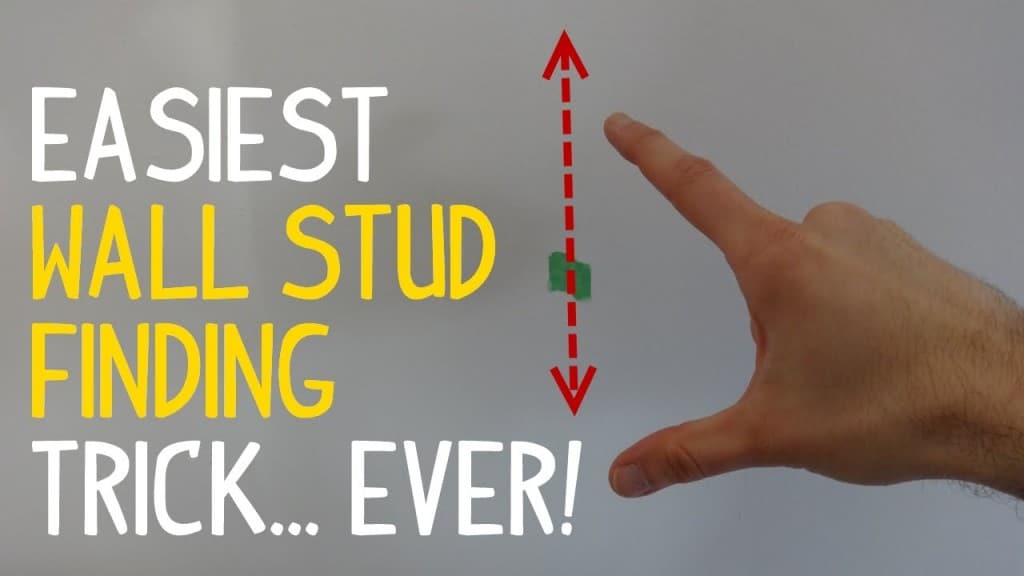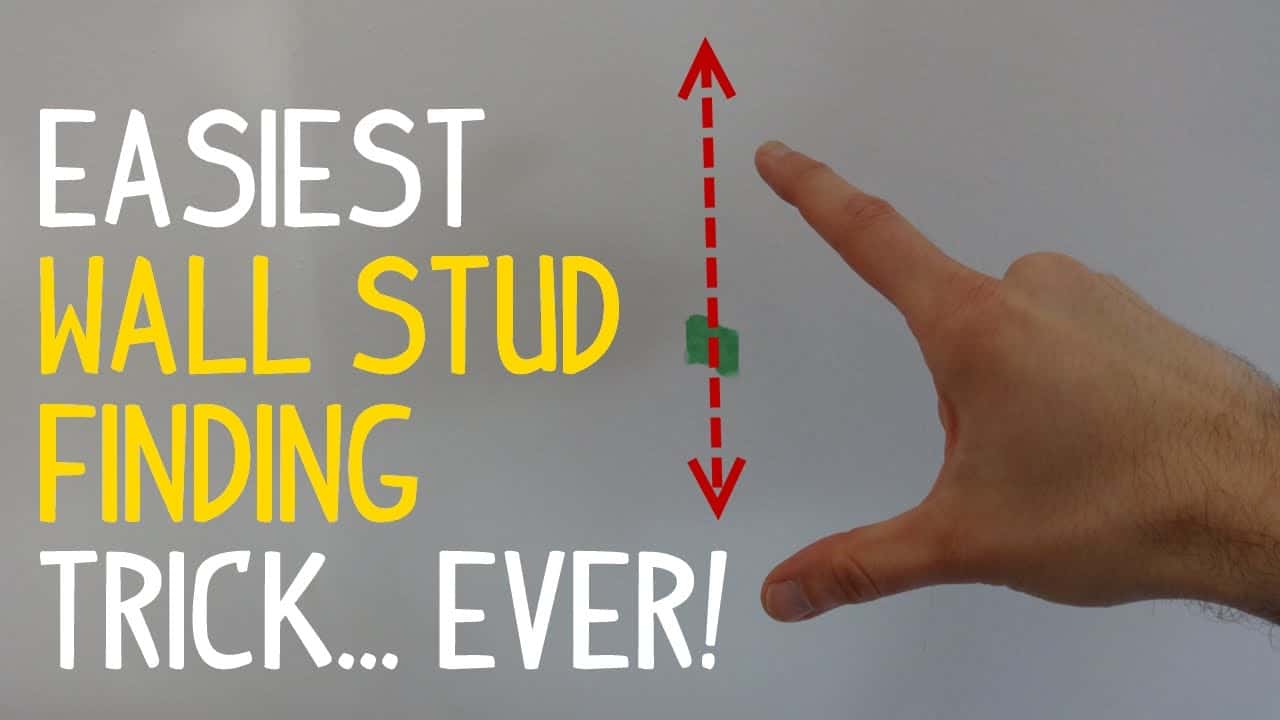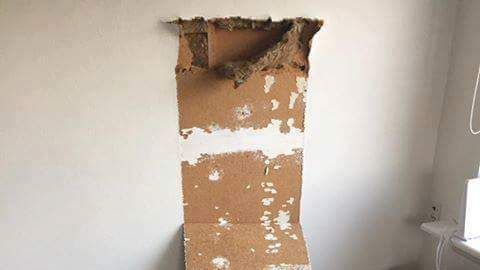To find a stud without a stud finder, you can use alternative methods such as knocking, measuring, or using a magnet. These techniques allow you to locate studs in your wall without the need for a specialized tool.
By following these simple steps, you can easily identify studs and hang objects securely in your home. These methods are particularly useful when you don’t have access to a stud finder or if you prefer to use a DIY approach.
So, let’s explore these techniques in more detail to help you find studs without a stud finder.
Why Finding A Stud Is Important
Finding a stud is crucial for any home improvement project. Learn how to locate a stud without a stud finder and ensure the stability of your wall.
Finding a stud before mounting anything on a wall is an essential step to ensure proper installation and to prevent any damage. Knowing where the studs are located allows you to securely hang heavy objects such as shelves, mirrors, or pieces of furniture. Without a stud finder, you might find yourself guessing or relying on trial-and-error, which could lead to frustration and potential damage to your walls or furniture. In this article, we’ll discuss why finding a stud is important and provide you with alternative methods to locate a stud without a stud finder, so you can confidently mount your items and maintain the integrity of your walls.Ensures Proper And Secure Mounting
When you hang something on a wall, you want it to be secure and stable. By finding a stud, you can ensure that the screws or nails you use will be anchored firmly into a load-bearing structure, providing the necessary support. Studs are typically made of solid wood or metal and are strong enough to hold heavier items. Attempting to mount something without locating a stud can result in your item coming loose or, even worse, damaging the wall. This could lead to costly repairs and an unsteady installation.Prevents Damage To Walls Or Furniture
Finding a stud not only ensures proper mounting but also helps you avoid any damage to your walls or furniture. When you locate a stud, you can drive screws or nails directly into it, reducing the risk of creating extra holes in the wall. This means you won’t have to worry about patching up unnecessary holes or damaging the plaster or drywall. Additionally, by securely mounting objects to studs, you minimize the chances of them falling off and potentially causing damage to your furniture or other valuable items. Now that we understand the importance of finding a stud before mounting anything on a wall, let’s explore some alternate methods you can utilize if you don’t have a stud finder at hand. These techniques are simple, effective, and will help you confidently hang your items without compromising the stability of your walls.Traditional Methods Of Locating A Stud
When it comes to hanging heavy objects on your walls, finding a stud is crucial. While a stud finder can make the process quick and easy, sometimes you may not have one on hand. Fortunately, there are several traditional methods you can use to locate a stud without a stud finder. In this article, we’ll explore three popular techniques that can help you identify the right spot to securely hang your artwork, shelves, or mirrors.
Visual Inspection
If you don’t have a stud finder, you can rely on your sharp eyes to visually locate a stud. Start by examining the wall for any visible patterns or imperfections. Often, studs are placed every 16 or 24 inches, so look for slight changes in the texture of the wall or any visible seams that indicate the presence of a stud. Additionally, pay attention to electrical outlets or switches, as they are typically attached to studs. Once you spot these visual cues, mark the area for further confirmation.
Using A Measuring Tape
Another effective method to locate a stud is by using a measuring tape. Begin by measuring 16 inches from any corner of the room and lightly mark the spot. Repeat this step on the adjacent wall. Then, use a level or straight edge to draw a vertical line between the marks. This technique relies on the standard spacing of studs, with most being placed 16 inches apart. By drawing a line vertically, you can identify the approximate area where you’re likely to find the stud. Remember, this technique is not foolproof and should be used in conjunction with other methods.
Knocking On The Wall
Believe it or not, you can use your ears to help you find a stud! By lightly tapping on the wall, you can listen for differences in sound or vibrations that indicate the presence of a stud. To do this, use your hand or a small hammer and start tapping along the wall. When you hear a hollow sound, chances are you’re in between studs. However, when you hear a dull and solid sound or feel resistance, that’s a strong indicator that you’ve found a stud. Keep in mind that this technique requires a bit of practice, so don’t be discouraged if it takes a few tries.
Alternative Techniques For Finding A Stud
Finding a stud without a stud finder can be a daunting task, but fear not! There are several alternative techniques that can help you locate a stud in your wall. In this article, we will explore three effective methods: the magnet method, electronic stud finders, and using a flashlight. With these techniques, you’ll be able to confidently hang your heavy mirrors, shelves, and artwork without any worries.
Magnet Method
One of the easiest and most effective ways to find a stud without a stud finder is by using a magnet. Here’s how you can do it:
- First, find a small, powerful magnet. It can be a refrigerator magnet or any other small magnet that you have on hand.
- Hold the magnet against the wall and start moving it horizontally.
- As you move the magnet, pay close attention to any resistance or pulling force you feel.
- When you encounter a spot where the magnet strongly attracts to the wall, you’ve likely found a stud.
- Mark the spot using a pencil or tape, and continue checking for additional studs along the wall.
This method works because studs are usually made of wood or metal, which are magnetic materials. By using a magnet, you can easily locate the presence of a stud behind the wall.
Electronic Stud Finders
If you’re looking for a more advanced and precise method, an electronic stud finder can be a great option. Here’s how to use it:
- Start by selecting the stud finder’s stud detection mode. Some stud finders have different modes for different materials, such as wood, metal, or live electrical wiring. Choose the appropriate mode for your needs.
- Place the stud finder against the wall and slowly move it horizontally.
- As you move the stud finder, it will detect changes in density or composition behind the wall.
- When the stud finder indicates a stud, mark the spot using a pencil or tape.
- Repeat the process to locate additional studs along the wall.
Electronic stud finders are highly accurate and can provide additional information, such as the width of the stud and whether there are any electrical wires present. They are a reliable tool for both professional contractors and DIY enthusiasts.
Using A Flashlight
If you don’t have access to a magnet or electronic stud finder, you can still find a stud using just a flashlight. Here’s how:
- Turn off the lights in the room and close the curtains or blinds to ensure the area is as dark as possible.
- Hold a flashlight parallel to the wall and position it at eye level.
- Slowly scan the wall from left to right, looking for any small indentations or imperfections.
- When you notice a slight shadow or bump, it could indicate the presence of a stud.
- Mark the spot and check for additional studs along the wall.
While this method may not be as foolproof as the previous ones, it can still be useful in finding studs, especially if you can’t access any other tools.

Credit: www.studfindertool.com
Tips And Tricks For Accurate Stud Detection
Looking for tips and tricks on how to find a stud without a stud finder? Discover accurate stud detection techniques to help you locate studs effortlessly in your walls. Say goodbye to the need for a stud finder with these simple and effective methods.
Finding a stud in your wall doesn’t always require a stud finder. With a few tips and tricks, you can locate the studs in your walls with precision and confidence. In this section, we will explore some effective methods to help you accurately detect studs without a stud finder. From locating electrical outlets and switches to paying attention to wall decorations, we’ve got you covered.
Locating Electrical Outlets And Switches
Electrical outlets and switches can be your allies in finding studs. Most electrical boxes are securely attached to a stud, making them a reliable indicator. Look for outlets and switches along the wall and use them as reference points for locating the studs. Pay close attention to the distance between the outlet or switch and the corner of the wall. Studs are typically spaced 16 or 24 inches apart, so if you measure a consistent interval, you’re likely on the right track.
Paying Attention To Wall Decorations
Wall decorations, such as paintings, picture frames, or shelves, often utilize studs for support. By observing the placement of these items, you can gain valuable insight into the stud locations. Start by examining any visible anchor points or mounting hardware. These are typically secured into studs to ensure stability. Take note of the spacing between decorations and use a measuring tape to determine if there is a recurring pattern. Such patterns can indicate the presence of studs, helping you in your search.
Using Multiple Methods For Confirmation
When it comes to stud detection, it’s always best to use multiple methods for confirmation. Combining different techniques ensures greater accuracy and reduces the chances of misidentifying a stud. For example, if you locate an electrical outlet that suggests a stud position, cross-check your findings by looking for other indicators, like wall decorations or even sound variations when tapping the wall. Remember, the more evidence you gather, the more confident you can be in your stud detection efforts.
Common Mistakes To Avoid
Learn how to locate a stud without using a stud finder to avoid common mistakes. Follow these 6 guidelines to find the right spot on your wall, ensuring a secure and stable support for hanging shelves, cabinets, or other heavy items.
Finding a stud without a stud finder can be a challenge, but with the right techniques and a little patience, it is definitely achievable. However, there are some common mistakes that people often make when trying to locate a stud without the help of a stud finder. By being aware of these mistakes, you can avoid potential headaches and ensure a successful outcome.
Assuming Stud Placement
One common mistake that many people make is assuming where the studs are located in their walls. While studs are often spaced at regular intervals, it is not always the case. Making assumptions about stud placement can lead to inaccurate findings and wasted efforts. It’s essential to remember that stud placement can vary depending on factors such as the age and construction of your home.
To avoid this mistake, it’s important to adopt a systematic approach. Start by identifying a stud where you know it is located, such as an electrical outlet, and use it as a reference point. From there, measure out regular intervals and tap the wall gently with your knuckles or a small hammer to listen for a solid, resonant sound. This method allows you to locate additional studs without assuming their placement.
Ignoring Stud Finders
While the focus of this article is finding a stud without a stud finder, it is important not to ignore this handy tool altogether. Stud finders use different mechanisms such as magnetic or electronic sensors to detect studs easily and accurately. Although they might not be foolproof, they can significantly simplify the process.
If you want to avoid the hassle of finding studs manually, investing in a good-quality stud finder is a wise choice. With their ability to detect edges and density changes in walls, stud finders provide reliable results with minimal effort. By combining the use of a stud finder and the techniques mentioned earlier, you can increase your chances of finding studs accurately and quickly.
Neglecting To Check Corners
Another common mistake is neglecting to check the corners of your walls. Studs often run along the corners, making them a prime location to find solid structural support. By ignoring the corners, you could potentially miss out on finding studs and risk damaging your walls when attempting to hang heavy items.
When searching for studs, ensure you check both inside and outside corners thoroughly. Use the tapping method or a stud finder to ensure you locate the studs accurately. By paying attention to the corners, you’ll have a more complete understanding of the stud placement in your walls and can proceed with your projects confidently.

Credit: www.studfindertool.com

Credit: www.housebeautiful.com
Frequently Asked Questions For How To Find A Stud Without A Stud Finder
Can I Finding Studs Without A Finder?
Yes, you can find studs without a stud finder. Knocking on walls or using a magnet can help locate studs.
Can I Use My Phone As A Stud Finder?
No, you cannot use your phone as a stud finder. Stud finders are specialized tools designed to detect hidden studs behind walls, whereas phones do not have the necessary technology for this purpose. It is recommended to use a dedicated stud finder for accurate results.
How Far Apart Are Wall Studs?
Wall studs are typically spaced 16 inches apart. This standard spacing allows for the installation of drywall and provides structural support for walls. It’s important to locate studs before hanging heavy items or installing shelves to ensure proper anchoring and stability.
How Do You Find A Stud When The Stud Finder Doesn’t Work?
If the stud finder doesn’t work, try these methods to find a stud: 1) Look for nails or screws in the wall, indicating the stud’s location. 2) Tap the wall to listen for a solid sound, indicating a stud. 3) Use a magnet to find metal screws or nails in the wall.
4) Use a flashlight to find imperfections like dimples or cracks, which could signify a stud.
Conclusion
Locating a stud without a stud finder is not as daunting as it may seem. By utilizing simple yet effective techniques such as measuring from electrical outlets and using a magnet, you can successfully find a stud and proceed with your project.
Remember to take your time, be patient, and rely on the helpful tips provided. Happy DIY-ing!